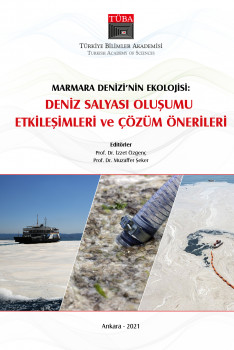Detection and Monitoring of The Mucilage Occurrence in The Marmara Sea With Remote Sensing Technologies

Detection and Monitoring of The Mucilage Occurrence in The Marmara Sea With Remote Sensing Technologies
Global warming has effects that disrupt the natural balance in seas as well as terrestrial areas. The mucilage events, which have been experienced frequently in the Adriatic and Tyrrhenian seas for more than 200 years, were observed for the first time in the Marmara Sea in 2007. Since May 2021, it has turned into a natural disaster that has emerged intensively. The mucilage, which started to cover large areas on the sea surface, has also seriously threatened the living life under the sea. Remote sensing technologies are effective in monitoring the areal extent, density, temporal movement, and temperature difference of the muci- lage and determining the effects of the cleaning works carried out in the field. The basis for many studies, especially rehabilitation studies that can be carried out in mucilage areas, the measures to be taken in the areas where it is directed, the calculation of the total mucilage volume by matching the thickness map of the mucilage layer, are the mucilage distribution maps produced periodically. In this study, a mucilage index using the relationship between the four spectral bands of the Sentinel-2 satellite image was defined. Using this index, mucilage index maps were created for satellite images dated 14, 19 and 21 May 2021. With the mucilage index introduced for Sentinel-2, an important data set can be generated in the rapid detection and analysis of mucilage formations. In addition, surface temperatures of clean sea surface and mucilage formations were analysed using the thermal band of Landsat-8 satellite image acquired on May 17, 2021. As a result, it was determined that the surface temperature of mucilage formations was about 3°C higher than the mean sea surface temperature. The findings revealed that remote sensing can be used to improve early warning and preparedness, therefore it is an indispensable tool in disaster risk management.
